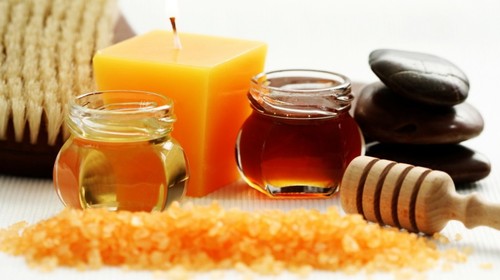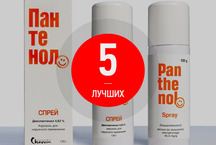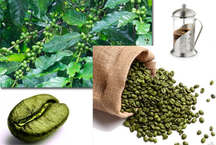
Treatment of burns folk remedies
The need for traditional medicine is difficult to deny. Even considering that the overwhelming majority of traditional medicine recipes have not passed clinical trials, and their use cannot be recommended as the main methods of treatment, they can be useful as adjuvants.
But this statement does not apply to all popular methods: some of them can be classified as useless, others as conditionally harmless, and still others - frankly dangerous.
Let's take a closer look at the most popular means of traditional medicine that are recommended for treating burns - and find out if they will be useful, or vice versa - will they cause serious harm?
Ice
the most popular folk remedy for burns

It is difficult to trace the birth and development of this myth, but the ice today is considered the best folk first aid for burns. Traditional medicine involves the immediate application of ice in any form to the burned area of skin. In some cases, among the recommendations one can even come across something from the category “If there is no ice, take a packet of frozen vegetables or meat from the freezer”. It is possible that the “benefit” of ice is seen by the healers in the manner in which the opposites act: if the injury arose due to high temperatures, then it should be treated with low temperatures.
But burn - not hematomain which the application of ice (necessarily wrapped in cloth!) really helps to narrow the lumen of blood vessels and reduce bleeding. With burn injuries in the skin, a significant violation of thermoregulation occurs, which is further aggravated by ice. If you do not need to receive the status of a unique patient who has both burns and frostbite at the same time - abandon the idea of applying ice to the burned skin.
Grated raw potatoes

Potatoes put in the heading only as an example. In fact, there are a lot of varieties of this recipe of traditional medicine: burdock and plantain leaves, ground into mush and applied to a burn, grated raw carrots, cabbage leaves, and so on.
All these methods use the principle of moisturizing burnt skin - almost all parts of fresh plants, when grinding, produce juice, which, in fact, serves as an "active ingredient". But a similar effect can be achieved by substituting a portion of the skin damaged by a burn under a stream of cold water.
In addition, the need to find the right raw materials (potatoes, carrots, etc.), washing it from contamination and grinding leads to the loss of precious time: the burn needs to be moistened and cooled only in the first 15-20 minutes, then this idea becomes meaningless, and in some cases it can even lead to complications.
To some extent, vegetable raw materials can contribute to the saturation of the skin with biologically active substances that stimulate cell division. But considering high risk of infection when using such "improvised" means, the value of such bio-stimulation is reduced to zero.
Aloe

In folk medicine, aloe appears as a panacea for any kind of skin damage. Not surprisingly, the treatment of burns (one of the most common type of injury) is not complete without the use of this plant.
Aloe is really rich in substances that stimulate the process of cell division of the skin, soften the effect of free radicals, accelerate healing and generally “rejuvenate” the skin. But only in one case: if the age of aloe is at least 4-5 years old, and the cut leaves have undergone preliminary processing, which consists in the prolonged storage of leaves in a dark, cool place.In such conditions, the beneficial substances contained in aloe, pass into the active form and can be considered truly biologically active. Otherwise you simply moisten the burn with a means of questionable purity and benefit, and spoil the plant.
Honey

As a remedy for burns, traditional medicine strongly recommends honey. Moreover, not only for outdoor (lubrication of the burn with honey), but also for internal use. Allegedly, a "comprehensive approach" is able to quickly cure burns of any degree of severity.
We will not deny the benefits of honey, as a means rich in biologically active substances, micro-and macro-elements and generally enhancing the immune system. But it has nothing to do with burns: applied to damaged skin, honey creates surprisingly favorable conditions for the colonization of a wound by pathogens. As a result, a burn is often complicated by purulent inflammations that need antibacterial therapy.
Consumption of honey solution inside is to some extent justified. Drinking a sufficient amount of fluid prevents dehydration and facilitates the elimination of toxins formed during the breakdown of protein, which before the burn was an integral part of skin cells. But with minor burns, dehydration and intoxication are unlikely. And with severe burns, a large amount of fluid will further complicate the work of the kidneys and lead to consequences of a different, more serious level.
In addition, allergy sufferers and people with gastric ulcer will be particularly “happy” to honey drinks, in which honey can cause conditions that need help from traditional medicine, and help should be urgent.
Vegetable oils and animal fats

If it is possible to understand and logically justify the use of sea buckthorn oil or hypericum in the treatment of minor burns (the content of bioactive substances and analogues of antibiotics in them), then the popularity of sunflower, corn, olive and other oils, as well as goose fat causes bewilderment.
In traditional medicine, it is recommended to apply oil, for example, sea buckthorn, on the border of burns and healthy skin in order to prevent cracking of the skin during healing. But traditional medicine is categorical: oil or fat should be applied to the entire area of the burn with a thick layer. This method can be considered perfect and irreplaceable, if your goal - completely clog the pores of the skin and stop the skin "breathing". Taking into account that the main part of the oxygen required by the skin cells enters them directly from the surrounding air, the treatment of burns with this method can last for months and years, since the chemical processes that take place with the participation of oxygen simply stop in the skin: regeneration, cycle cell division and renewal, etc. Treatment of burns with oils can be complicated by abscesses, necrosis, and other conditions. A scar left after recovery will always remind you of the incredible healing power of sunflower oil.
Urine

Treatment of burns with the urine of one’s own “production” can be considered the apogee of traditional medicine.
Chemical and biological studies of urine did not find anything in it that could contribute to the treatment of thermal, chemical or radiation burns. However, in folk medicine, this method is positioned as universal and not having contraindications.
One may agree that the application of urine to a burn, which is not accompanied by the formation of blisters or damage to the integrity of the skin, can have a sedative effect due to the placebo effect (if you firmly believe in the medicinal properties of urine). But when it comes to burn wounds, urine use can be dangerous. For example, salts contained in urine are irritating to a wound and cause dehydration of tissues already sufficiently affected by fluid loss.Moreover, the products of metabolism that are excreted in the urine, even with a strong desire can not be called useful. And once on the wound, these substances initiate inflammatory processes, the outcome of which is difficult to predict.
And if there is any systemic infection in your body, then applying infected urine can cause a wide range of complications throughout the body and bring many thrills into your life. Such as hospitalization with subsequent long-term treatment, but not with urine.
What to do with a burn?
So, folk remedies can not help with the treatment of burn wounds. If the burn is small, cool the skin under cold water and after 15-20 minutes apply a sterile dressing. Treat burns need only drugs. If the burn is severe, the skin should not be cooled. Drink the patient and be sure to contact your treatment institution as soon as possible!
Read more about first aid and treatment of burns in the video Andrei Alekseev, head of the burn center of the Institute of Surgery. A.V. Vishnevsky:






